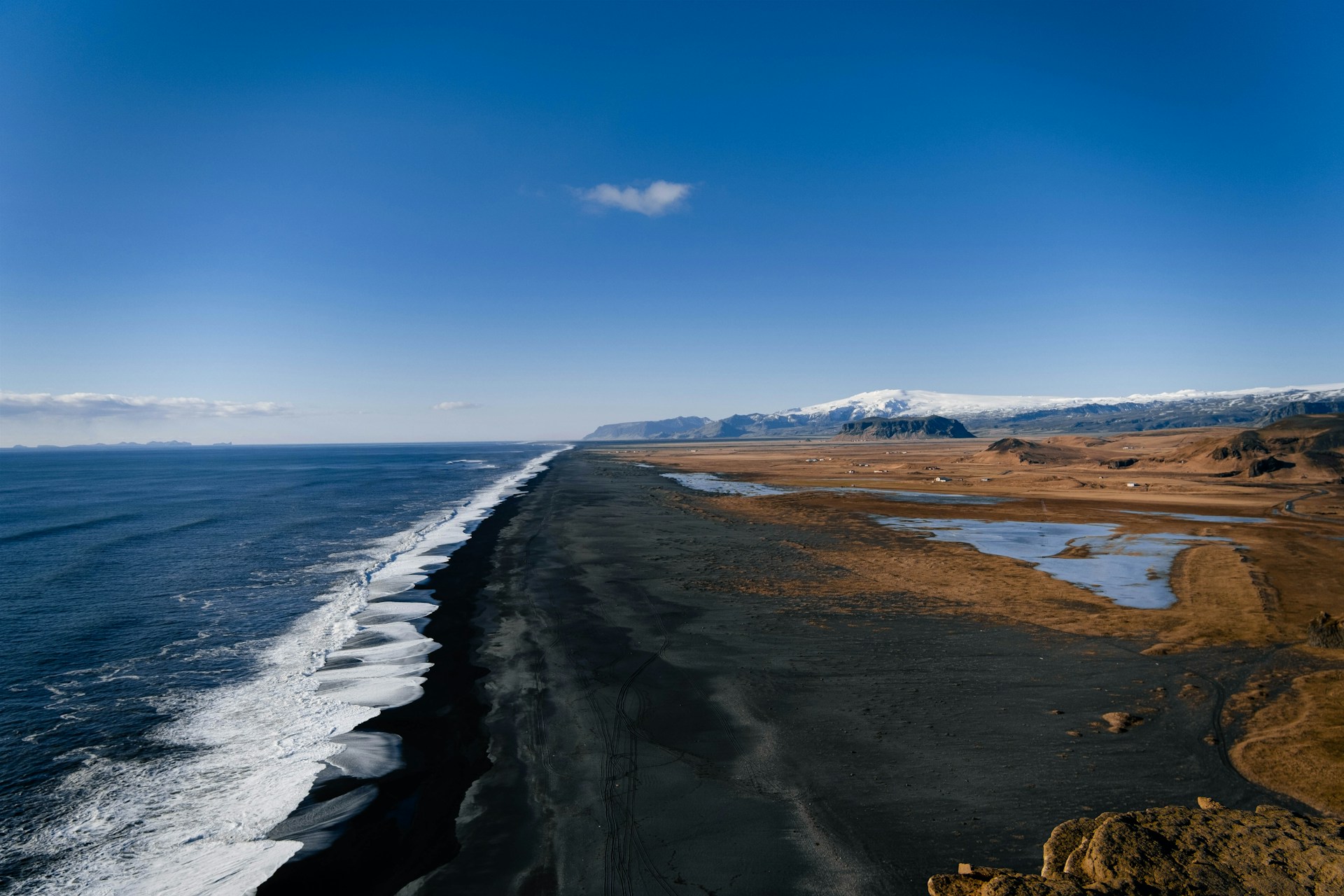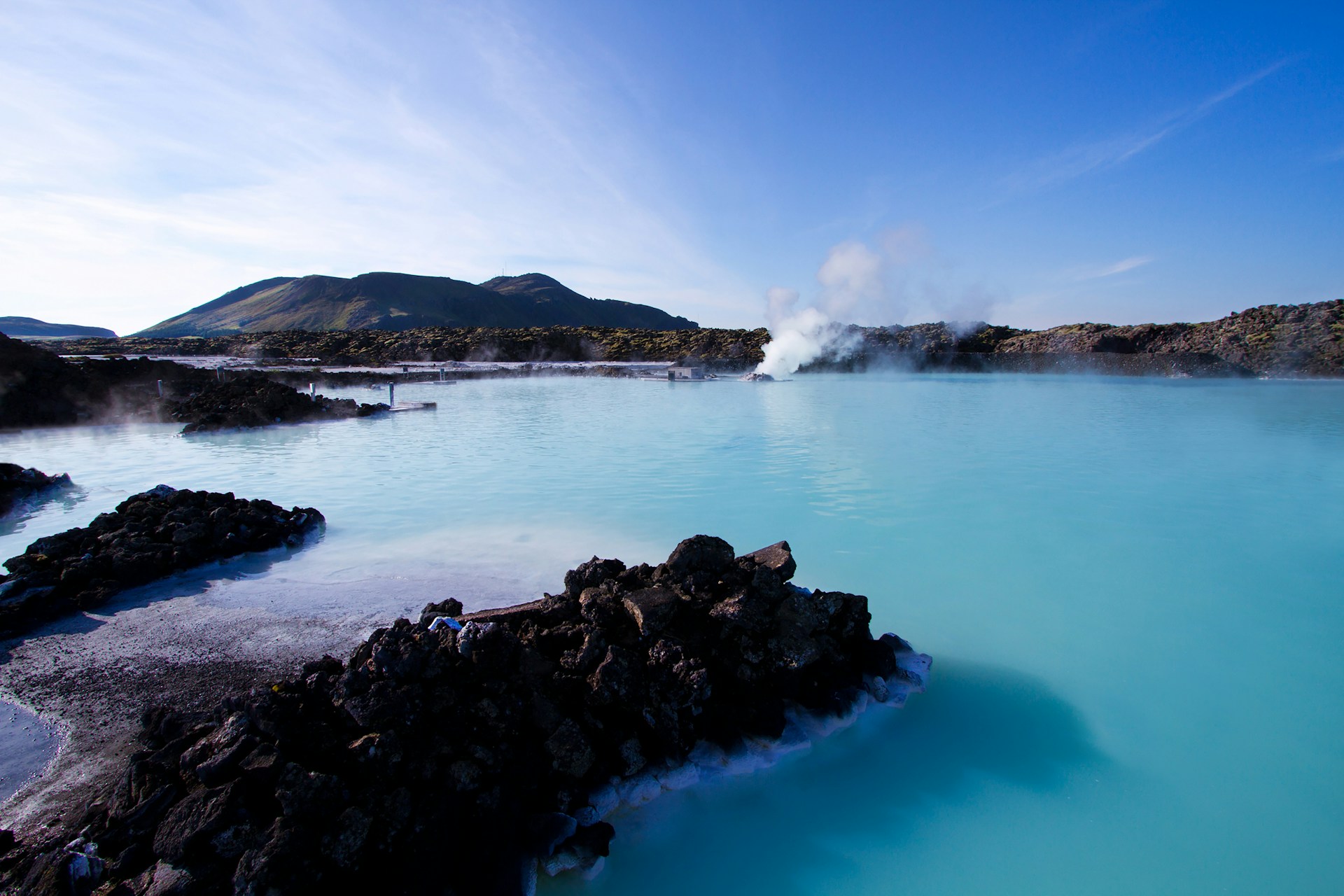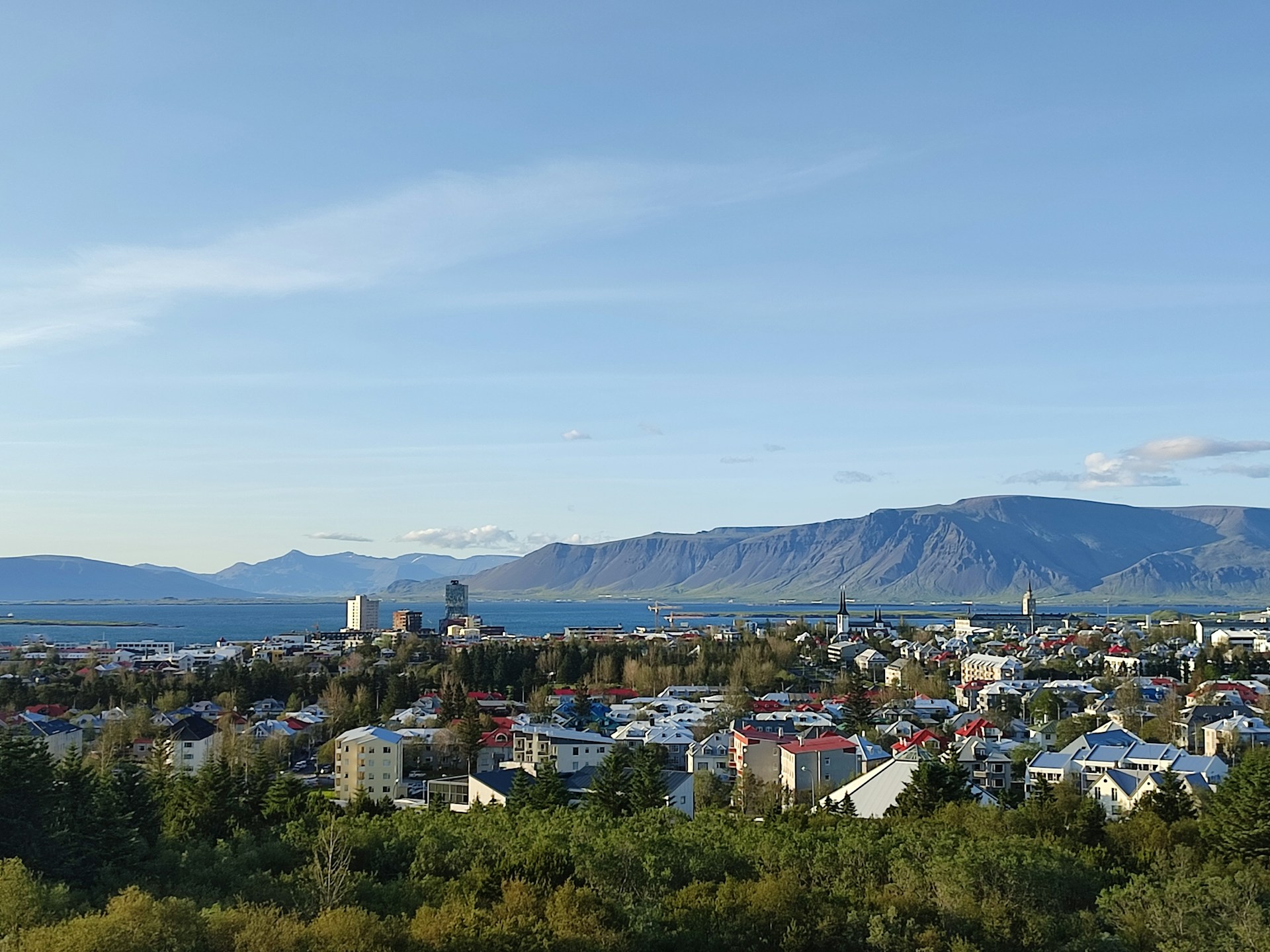Campsites Along Iceland’s Westfjords: A Rugged Adventure
Your guide to camping in Iceland’s Westfjords—top campsites, facilities, and tips for exploring one of the country’s most rugged regions.
Planning a trip to Iceland and wondering what authentic souvenirs to bring home? Iceland offers a treasure trove of unique gifts that capture the essence of this Nordic island nation. From traditional woolen goods to volcanic beauty products, this comprehensive guide will help you discover the most sought-after Icelandic souvenirs and exactly where to find them.
The lopapeysa sweater is Iceland's most famous souvenir and represents over 1,000 years of knitting tradition. These sweaters are made from Icelandic sheep wool, which has special properties - the outer layer keeps water out while the inner layer keeps you warm. This makes them perfect for Iceland's cold and wet weather.
The round pattern around the neck and shoulders isn't just for looks - it spreads the weight evenly and acts like a collar to keep rain out. The patterns often have meaning from Icelandic stories, with stars for the Northern Lights, waves for the ocean, and geometric shapes for ice crystals. Real hand-knitted sweaters take 40-60 hours to make and use traditional techniques passed down through families.
Best places to buy authentic lopapeysa sweaters:
Expect to pay $150-300 for a real hand-knitted lopapeysa, with machine-made versions for $80-120.
Icelandic wool blankets use the same great wool as the sweaters and are made with old weaving methods. They use a technique called "rosepath" that creates diamond patterns while keeping you warm and letting air flow through. The wool naturally keeps water out, fights bad smells, and cleans itself, so these blankets last for many years with little care.
Traditional blankets come in different styles with cultural meaning. "Field blankets" use natural wool colors - white, grey, and brown - and were used by farmers and fishermen because they're so strong. Decorative blankets have patterns like those on sweaters, often with eight-pointed stars that represent the eight directions of a compass, which comes from old Norse sailing traditions.
Top retailers for Icelandic wool blankets:
Icelandic wool accessories like mittens, hats, and scarves use the same quality materials and skills as larger items, making them perfect souvenirs for people who want authentic pieces without buying a full sweater. Hand-knitted mittens use a special two-strand technique that makes them very warm and strong. The patterns often tell stories from Icelandic foelklor or show natural things like snowflakes, mountains, and ocean waves.
Wool hats, scarves, and leg warmers follow the same traditional methods, with many pieces having the same patterns as the sweaters but made smaller. The natural oils in Icelandic wool make these accessories water-resistant and fight germs, so they're practical for everyday use long after your trip ends. Many craftspeople add special touches like buttons made from Icelandic horn or driftwood found on local beaches.
Where to find quality wool accessories:

Iceland's geothermal sea salt has become famous worldwide, with top chefs praising its unique taste and eco-friendly production. Saltverk, Iceland's main sea salt maker, uses geothermal energy to dry seawater from the clean Westfjords coast, creating salt crystals with special minerals from Iceland's volcanic land. This old method from the 1700s makes salt with a clean, bright flavor and subtle mineral taste that makes food taste better.
The process uses Iceland's natural hot springs to slowly dry seawater in shallow pans, forming large pyramid-shaped crystals. Different types include smoked salt with Icelandic birch, herb blends with wild thyme, and black lava salt colored with volcanic ash. Each type captures different elements of Iceland's unique environment, making them special ingredients for home cooks and professional chefs.
Where to buy premium Icelandic sea salt:
Icelandic chocolate brands like Omnom and Nói Síríus make world-class sweets using local ingredients and traditional Nordic flavors. Omnom uses high-quality cacao beans and mixes them with distinctly Icelandic ingredients like sea salt, wild bilberries, and birch syrup. Their unique flavors include "Milk & Sea" with Icelandic sea salt and "Coffee & Milk" made with locally roasted coffee beans.
Icelandic licorice candy, especially from Nói Síríus, offers a unique taste that's different from licorice found elsewhere. It has a complex mix of sweet and salty flavors with strong, real licorice root extract.
Popular types include chocolate-covered licorice, salted licorice drops, and the famous "Draumur" (Dream) bars that mix milk chocolate with soft licorice centers - flavors that locals have loved for generations.
Best locations for Icelandic sweets:
Brennivín, Iceland's signature liquor known as "Black Death," is the country's most famous alcoholic drink and has deep cultural meaning as the traditional drink to have with fermented shark. This caraway-flavored spirit is made from fermented potato mash and flavored with caraway seeds, angelica root, and other plants. It has been made since 1935 with the same recipe and black label design that reflects Icelandic style.
Modern Icelandic distilleries now make premium spirits using local plants and new techniques. Reyka Vodka is made using geothermal energy and filtered through volcanic rock, giving it a clean, smooth taste. Eimverk Distillery makes small batches of gin, rum, and whiskey using Icelandic spring water and locally gathered plants like Arctic thyme, birch, and juniper berries.
Where to purchase Icelandic spirits:

Blue Lagoon's geothermal skincare line is Iceland's most famous beauty export, using the power of silica, algae, and minerals from Iceland's unique geothermal waters. The milky blue geothermal seawater has a powerful mix of silica that gently removes dead skin cells, algae that feeds and softens skin, and mineral salts that help restore skin's natural balance. These natural elements work together to help with dry skin, sensitive skin, aging, and environmental damage.
The brand's main products include the Silica Mud Mask, which lets you have the spa experience at home using real geothermal mud, and the Algae Mask, made with hand-picked blue-green algae rich in vitamins, minerals, and antioxidants. Studies have shown these geothermal ingredients work well to improve skin moisture, elasticity, and overall texture, making Blue Lagoon products popular not just as souvenirs but as real skincare solutions.
Authorized Blue Lagoon product retailers:
Local Icelandic beauty brands make premium cosmetics using native plants, moss, and mineral-rich waters that grow in Iceland's clean Arctic environment. Bioeffect, started by Icelandic scientists, changed skincare with their barley-based EGF serum, made in volcanic pumice greenhouses using geothermal energy. This breakthrough technology uses barley plants to make growth factors just like those naturally found in human skin, helping cells renew and regenerate with amazing anti-aging results.
Traditional Icelandic plants like Arctic cloudberry, rich in vitamin C and antioxidants, and Iceland moss, known for fighting bacteria and healing, form the base of many local cosmetic recipes. Brands like Purity Herbs and Villimey use wild-picked ingredients like angelica root, birch extract, and sea buckthorn oil, creating products that show Iceland's commitment to sustainability and purity.
Top stores for natural Icelandic cosmetics:

Icelandic silversmiths make beautiful jewelry inspired by Norse mythology, volcanic landscapes, and sea heritage, mixing traditional skills with modern design. These artists work mainly with sterling silver, often adding locally found materials like obsidian volcanic glass, Icelandic pearls, and driftwood from remote beaches. Traditional designs use ancient Norse symbols like Thor's hammer, the Tree of Life, and runic writing, while modern pieces turn Iceland's dramatic landscapes into wearable art.
Many Icelandic jewelry pieces use unique gemstones and minerals found only in Iceland's volcanic environment, including green olivine crystals from basalt and rare Icelandic spar that shows double images.
Artists often mix these natural elements with traditional silversmithing techniques passed down through families, creating pieces from delicate everyday jewelry to bold statement pieces. The craftsmanship shows Iceland's connection to both its Viking past and its position as a modern Nordic design leader.
Premier Icelandic jewelry boutiques:
Icelandic ceramicists make functional art pieces that show the country's natural beauty, often using volcanic ash and local clay to create unique textures and colors that can't be made anywhere else. The volcanic ash adds special properties to ceramic glazes, creating surfaces from matte earth tones to glossy finishes with subtle metallic shine that changes in different light. Local clay formed over thousands of years of volcanic activity and glacier movement provides the base for pottery with great durability and distinctive mineral content.
Modern Icelandic ceramics blend traditional Nordic pottery techniques with modern artistic style, creating pieces that work well and look beautiful. Many ceramicists get inspiration from Iceland's rock formations, making vessels with surfaces that look like basalt columns, glacier-carved valleys, and flowing lava patterns.
Popular items include coffee mugs with organic hand-formed handles, serving bowls with crater-like dips, and decorative vases that capture Iceland's raw beauty.
Best ceramics shopping destinations:
Traditional Icelandic woodworking and horn carving represent some of the country's oldest craft traditions, using materials that were valuable during Iceland's settlement period. Icelandic artists work mainly with driftwood collected from beaches, as well as imported hardwoods made into functional items like wooden bowls, cutting boards, and serving utensils. The lack of native trees in Iceland historically made wood valuable, leading to craft traditions that focused on durability and function while adding decorative elements from Norse carving traditions.
Horn crafting, especially using horns from Icelandic sheep and cattle, makes distinctive drinking vessels, decorative items, and jewelry that connects directly to Viking-era traditions. Modern artists create new versions of traditional drinking horns, jewelry boxes with detailed carved designs, and decorative pieces that show the natural beauty of polished horn. These items often have carved runic writing, traditional knotwork patterns, or stylized pictures of Icelandic wildlife like puffins, horses, and whales.
Where to find wooden and horn crafts:

Iceland has the highest per-person book publishing rate in the world, making Icelandic literature a smart souvenir choice that offers deep insights into the country's culture and modern art. The medieval Icelandic sagas, written between the 1100s and 1300s, are some of the world's greatest literary works and give fascinating looks into Viking-age society, family life, and the dramatic landscapes that shaped Icelandic culture. Modern translations make these epic tales easy for international readers, with stories like Egil's Saga offering thrilling tales of honor, revenge, and survival.
Modern Icelandic literature continues this storytelling tradition with internationally praised authors like Halldór Laxness (Nobel Prize winner), Arnaldur Indriðason, and Ragnar Jónasson creating works that blend traditional storytelling with modern themes.
The Nordic crime genre has found particular success internationally, with Icelandic crime writers making atmospheric thrillers that use Iceland's isolated communities and dramatic weather as key plot elements. Many books come in bilingual editions or high-quality English translations.
Bookstore recommendations for Icelandic literature:
From Björk to Sigur Rós, Iceland produces amazing music far beyond what you'd expect from a country of 370,000 people. Iceland's music scene benefits from strong government support for arts education, a culture that values creativity over money, and the country's geographic isolation, which has allowed unique sounds to develop. Collecting Icelandic music makes memorable cultural souvenirs that capture the dreamy, atmospheric qualities that characterize much of Iceland's musical output.
The country's unique music landscape spans from experimental electronic music by artists like Ólafur Arnalds to the post-rock soundscapes of bands like Múm. Traditional Icelandic folk music, preserved in collections of epic ballads and folk songs, offers historical views of Icelandic culture and storytelling traditions. Many local record shops specialize in both vintage pressings of classic Icelandic albums and new releases from emerging artists.
Music stores specializing in Icelandic artists:

The center of Reykjavik offers concentrated souvenir shopping with authentic Icelandic products and international brands, all within easy walking distance of the city's main attractions and hotels. Laugavegur, the main shopping street, goes from downtown to the harbor and has a mix of international fashion stores, local boutiques, and specialized souvenir shops in colorful buildings. This pedestrian-friendly area lets visitors easily compare prices and selection across multiple stores.
The connected streets of Austurstræti, Hafnarstræti, and Bankastræti form the core of Reykjavik's shopping district, with each street offering different shopping experiences. Austurstræti has more traditional craft shops and galleries, while Hafnarstræti, closer to the harbor, includes sea-themed stores and restaurants serving fresh seafood.
Local markets give opportunities to find unique handmade items and vintage Icelandic goods at good prices while talking directly with local artists and collectors. Kolaportið, Reykjavik's weekend flea market, operates in a converted warehouse near the harbor and offers an authentic local shopping experience where visitors can find everything from vintage lopapeysa sweaters to homemade food products.
Seasonal artisan markets, especially during summer months and Christmas season, show the work of local craftspeople who might not have permanent stores. These markets often have one-of-a-kind pieces, handmade items at lower prices than retail stores, and chances to meet the artists. The changing selection of vendors means each visit offers new discoveries, making these markets excellent destinations for travelers seeking unique souvenirs.
Weekly markets and seasonal events:
Iceland's international airport offers extensive duty-free shopping with competitive prices on many Icelandic specialties, making it excellent for last-minute souvenir purchases. The airport's duty-free area covers over 2,000 square meters and has dedicated sections for Icelandic products, including comprehensive selections of Blue Lagoon skincare, Icelandic wool products, and local food specialties. Prices on alcohol offer significant savings compared to Iceland's high domestic taxes.
The airport shopping experience includes specialized Icelandic brands and products that might be hard to find elsewhere, including limited-edition items made specifically for travelers and gift sets that combine multiple Icelandic specialties in attractive packaging.
The lopapeysa sweater is by far the most popular and iconic Icelandic souvenir. These traditional wool sweaters with their distinctive circular yoke patterns represent over 1,000 years of Icelandic knitting tradition. They're made from unique Icelandic sheep wool that's naturally water-resistant and incredibly warm. Expect to pay $150-300 for an authentic hand-knitted lopapeysa, though machine-made versions are available for $80-120. You can find genuine ones at the Handknitting Association of Iceland in Reykjavik or local wool shops throughout the country.
Yes, Icelandic souvenirs are generally more expensive than those in most other countries due to Iceland's high cost of living, labor costs, and the quality of materials used. However, you can find budget-friendly options under $20 like sea salt packets ($8-15), small wool accessories ($15-25), chocolate bars ($5-12), and postcards ($2-5). To save money, shop at local supermarkets for food souvenirs, compare prices between tourist areas and local neighborhoods, and visit during end-of-season sales in late August.
Most packaged Icelandic food souvenirs like sea salt, chocolate, candy, and spirits can be brought home, but check your country's customs regulations first. Each country has different rules about food imports and duty-free allowances (typically $200-800 USD). Avoid fresh or perishable items that may be restricted. Icelandic sea salt, chocolate bars, licorice candy, and bottled spirits are generally safe choices that travel well and are allowed in most countries.
Look for "Made in Iceland" labels and certifications, as authentic items will clearly show their Icelandic origin. Genuine products typically have higher prices that reflect local labor costs and quality materials. Be wary of extremely low prices for supposedly handmade items, generic Nordic designs without Icelandic specificity, or items labeled "Made in China." Shop at established local businesses, family-owned stores, and places recommended by tourism authorities rather than high-traffic tourist shops with pushy sales tactics.